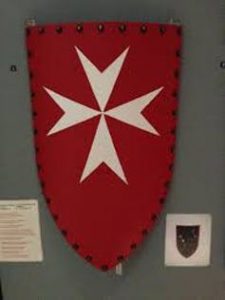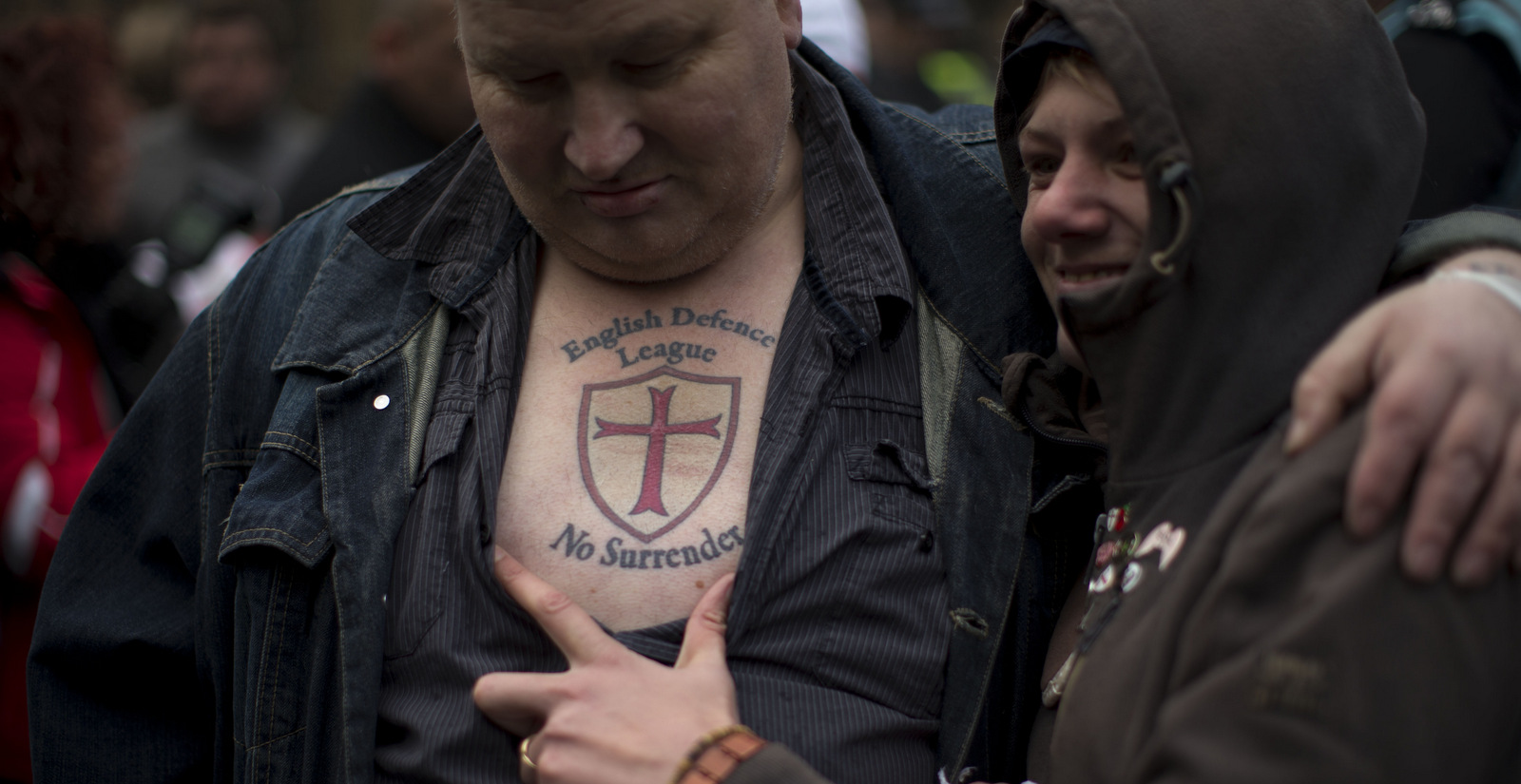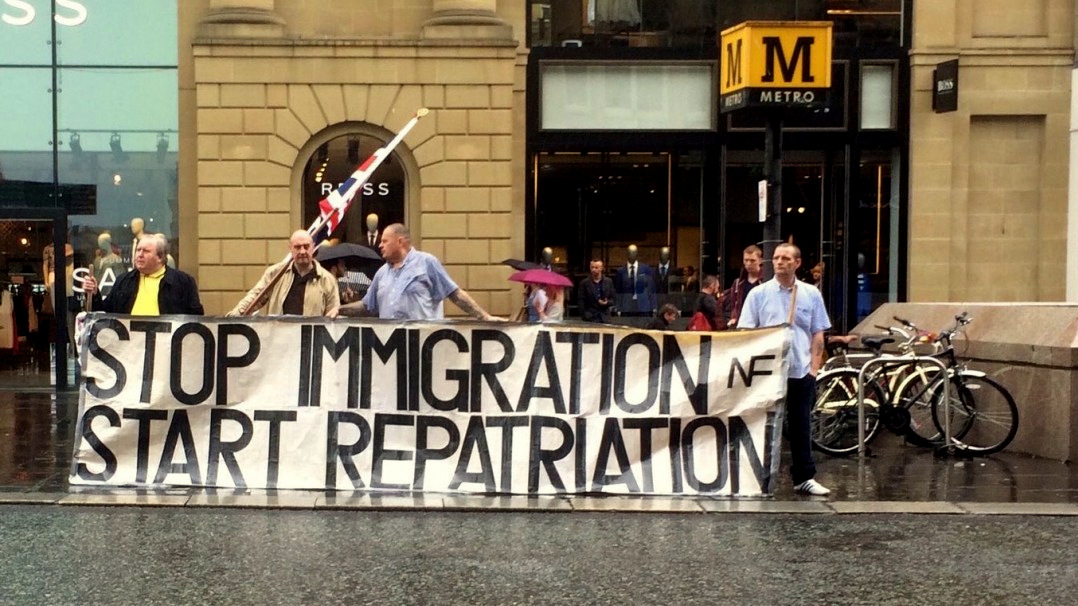When market-trader Tina Gayle was banned from selling mugs featuring Knights Templar logos in a Loughborough Market, Charnwood Borough Council ruled that they were offensive to Muslims. A story in the Daily Mail reported that Gayle had “been previously been warned by the council for selling Nazi memorabilia”.
A subsequent report said that the council had not been concerned about what was depicted on the mugs, only that they were new products being sold on a vintage market. But the inclusion in the coverage of this little reference to the stallholder’s Nazi products highlights the regular association of the Knights Templar with right-wing extremism.
Of course, the Knights Templar symbology recalls the crusades – and is associated with medieval Christian fanaticism – but other prominent crusade iconography, such as the cross of the Knights Hospitaller, used by St John’s Ambulance is overlooked. So why does Templar imagery garner a similar reaction to Nazi symbols, while another equally significant crusader image hardly registers with the wider public – except with positive connotations?
Soldiers, doctors and bankers
The Order of Knights of the Hospital of Saint John of Jerusalem, also known as The Knights Hospitaller, was founded after the first crusade to provide hospital care for pilgrims sanctioned by Pope Paschall II in 1113.


Escutcheon of the Knights Hospitaller of Rhodes (1305-1523) in Athens War Museum. (Dimitris Kamaras/Flickr/CC)
The infamous Order of The Poor Fellow-Soldiers of Christ and of the Temple of Solomon, also known as The Templar, was founded in 1119 by Hugh de Payens, a French nobleman, as a revolutionary monastic order, that would escort and protect pilgrims traveling to the Holy Land.
These two orders grew to become the premier Christian fighting forces in the Holy Land, due to a large amount of wealth gifted them by the European nobles. The Templars and the Hospitallers were major forces right up until the Christians were expelled from the Holy Land in 1291. Despite the prominence of their military roles, the Knights Hospitaller provided medical care for pilgrims, while the Knights Templar grew richer by acting as bankers for crusading nobles.
While both orders played major roles within the crusades, their respective icons evoke different sentiments – these days, the Hospitaller cross represents the charitable work of St John’s Ambulance but the Templar cross is deemed offensive and worthy of a ban.
Hatred on the streets


A member of the English Defence League far right group has his tattoo displayed for media cameras during a protest outside the Houses of Parliament in London, Oct. 27, 2012. (AP/Matt Dunham)
The red cross upon a white background, a symbol of the Knights Templar, carries connotations of nationalism within the UK due to its resemblance to the cross of St George on the English flag. The iconic cross has been thematically appropriated by extremist right-wing group the English Defence League (EDL), and the group has been known to dress in quasi-knightly garb.
The most infamous and horrific association with Templars in recent times would be the claims made by the right-wing extremist and mass murderer Anders Behring Breivik, who in 2011 carried out terrorist attacks in Norway. Following his attacks, a manifesto appeared in which Breivik claimed to be a Justiciar Knight Commander for Knights Templar Europe.
Breivik is not alone in asserting a Templar identity within right-wing views. The modern Templar community, The Knights Templar-UK, also forgets the monastic lifestyle of the order and uses it as a platform for the right-wing views outlined on its website. On a page called “Our Aims” it states:
With the advent of mass immigration, this balance can be swung in many directions, including ones where extremists of particular faiths, may wish to dominate and control other’s beliefs.
The site also offers a review of the British political parties, stating which ones the Templars would identify with most closely. According to the website, these parties are the English Democrats, Ukip and the BNP – ironic, when you think that the Templars were an international organization that spanned Europe.
In the frame


The English Defence League marches in Newcastle calling for the repatriation of immigrants in the wake of the EU referendum vote.
Popular culture often paints the Knights Templar as villains within a medieval setting, most notably in Ridley Scott’s Kingdom of Heaven, which depicted the Templar as racist murderers who hate Muslims and openly mock religion. Scott’s film depicts a Hospitaller knight as a pious man who counsels the film’s protagonist Balian and condemns the violent acts of the Templars.
Watch | The Trailer for The Kingdom of Heaven
Arabic chroniclers of the crusades directly contradict Scott’s villainous Templar. Syrian writer Usama ibn Munqidh (1095-1188) explains that the Templars were more understanding and respectful of the Islamic faith than the average Christian crusader. This underlines the doubtfulness of the Templar warrior monk’s fanatical hatred of Islam and subverts the notion of the order as a symbol of right wing Christian extremism.
Ridley Scott’s fictional depiction of the villainous Templar originates with Sir Walter Scott in his 1820 novel Ivanhoe, which was, in turn, inspired by discredited 19th-century accounts of the crusades. Those themes of hatred and greed leave out the religious aspect of the crusades, which the medieval scholar Nickolas Haydock, citing historian Professor Jonathan Riley-Smith, explains is “an invention of 19th-century medievalism, exemplified in the works of Sir Walter Scott”.
Scott’s fictional accounts created the notion of the evil Templar within popular culture and cast them as more like Nazis, in direct contrast to the more pacific Hospitaller order – who his film director namesake duly depicted as the opposite to the fanatical Templar.
So now the Templars have become associated with the worst excesses of an already dark period in medieval history. But to portray them as the ultimate evil of the crusades – or to praise them as champions of a narrow-minded nationalism – is a simplistic misrepresentation of the 200-year history of the crusades. There are no calls to ban the imagery of the Hospitallers, yet Templar iconography remains controversial due to its association with extremist views – unfairly connected to them through popular culture since the 19th century.
Top photo | Unidentified members of the extreme far right group the English Defense League as a English flag is blown over his face, during a protest outside the Houses of Parliament in London, Oct. 27, 2012. (AP/Matt Dunham)
Patrick Masters, Lecturer in Film Studies, University of Portsmouth. He writes for The Conversation, where this article first appeared.
<!–
–>
Source Article from http://www.mintpressnews.com/how-the-far-right-hijacked-the-knights-templar-who-were-actually-sympathetic-to-muslims/235245/
Related posts:
Views: 0
 RSS Feed
RSS Feed

















 December 7th, 2017
December 7th, 2017  Awake Goy
Awake Goy 
 Posted in
Posted in  Tags:
Tags: 
















